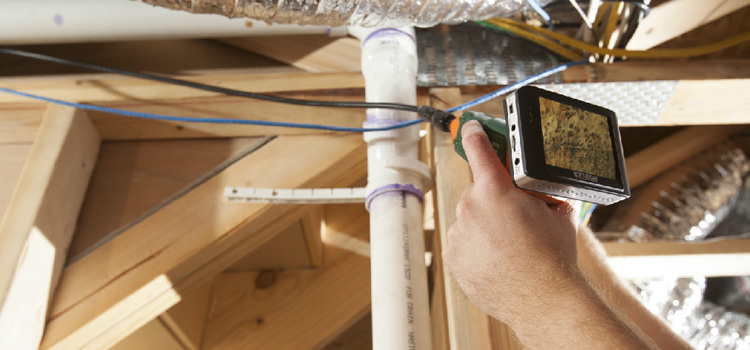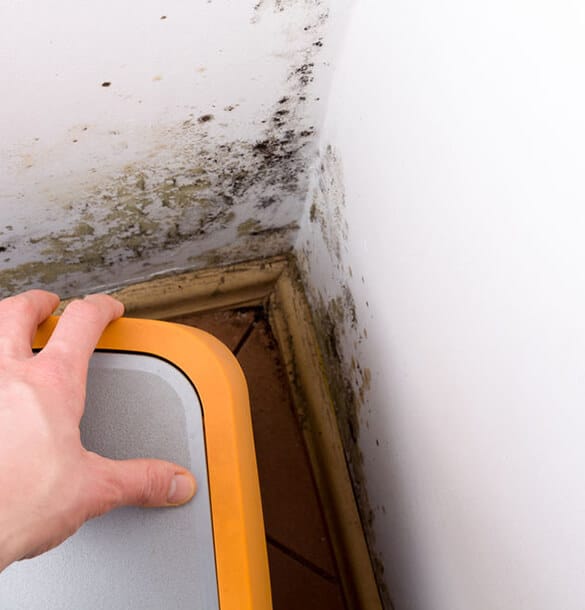Testing Air Quality After Mold Remediation
Your Ultimate Guide to Post Mold Remediation Methods
In the consequences of mold and mildew invasion, recognizing just how to successfully get rid of the mold and mildew and stop its reoccurrence is extremely important for preserving a healthy interior environment. From picking the ideal cleaning and disinfecting techniques to executing techniques for long-lasting mold and mildew avoidance, each action in the remediation trip plays an essential role in making sure a successful end result.
Recognizing Post-Mold Removal Process
After completing the mold remediation procedure, it is important to recognize the post-mold removal strategies that are necessary to make sure a efficient and comprehensive clean-up. When the mold and mildew has been gotten rid of, the next step includes cleaning and disinfecting the affected areas to protect against any type of regrowth of mold. This includes using specialized cleaning up agents to wipe down surfaces and kill any type of staying mold spores. It is vital to dry the area completely to discourage the growth of mold in the future (After mold remediation). Correct air flow and dehumidification can help in this process.
Additionally, carrying out a last evaluation post-remediation is essential to make certain that all mold and mildew has been effectively removed. This inspection needs to involve a comprehensive visual check as well as potentially air tasting to confirm the lack of mold spores airborne. Additional removal might be needed if the examination exposes any type of sticking around mold and mildew. Finally, enlightening residents on preventive procedures such as regulating dampness degrees and promptly resolving any kind of water leakages can help keep a mold-free setting.
Effective Cleaning and Sanitizing Approaches

Avoiding Future Mold And Mildew Growth

Relevance of Correct Air Flow
Proper air flow plays an important role in protecting against dampness build-up, an essential aspect in mold development within indoor settings. Effective air flow systems help eliminate excess humidity from the air, minimizing the possibilities of mold and mildew spores i thought about this discovering the dampness they need to sprout and spread out. Without ample air flow, indoor areas can come to be a breeding place for mold, leading to prospective wellness risks and architectural damage.
By ensuring appropriate air blood circulation, air flow systems can likewise aid in drying out damp areas quicker after water damages or flooding incidents, additionally hindering mold growth. Post Mold Remediation Report. Precede like shower rooms, attic rooms, cooking areas, and cellars where moisture levels have a tendency to be greater, mounting and preserving efficient ventilation systems is vital in preventing mold and mildew problems

Monitoring and Upkeep Tips
Provided the essential function that appropriate ventilation plays in stopping mold and mildew growth, it is important to establish reliable monitoring and upkeep tips to ensure the ongoing functionality of ventilation systems. Surveillance humidity degrees within the building is also critical, as high humidity can contribute to mold development. By staying mindful and aggressive to the condition of ventilation systems, building proprietors can effectively alleviate the threat of mold regrowth and maintain a healthy indoor environment.
Final Thought
To conclude, post-mold removal techniques are essential for making certain a safe and tidy setting. Understanding the process, implementing efficient cleansing and decontaminating approaches, preventing future mold and mildew development, maintaining proper air flow, and normal surveillance are all vital actions in the removal procedure. By complying with these guidelines, you can effectively eliminate mold and stop its return, functioning or promoting a healthy and balanced living area for all owners.
In the results of mold and mildew invasion, knowing just how to properly remove the mold and stop its reoccurrence is extremely important for preserving a healthy indoor setting. Once the mold has actually been eliminated, the next action includes cleaning and sanitizing the affected locations to avoid any regrowth of mold - what to do after mold remediation. After eliminating noticeable mold development, it is crucial to clean up all surface areas in the afflicted location to eliminate any kind of staying mold and mildew spores. To even more boost mold avoidance measures, it is necessary to address underlying problems that originally led to mold growth.Given the critical function that proper air flow plays in stopping mold and mildew growth, it is imperative to establish efficient tracking and maintenance pointers to make certain the ongoing capability of ventilation systems